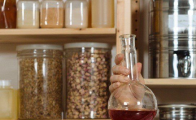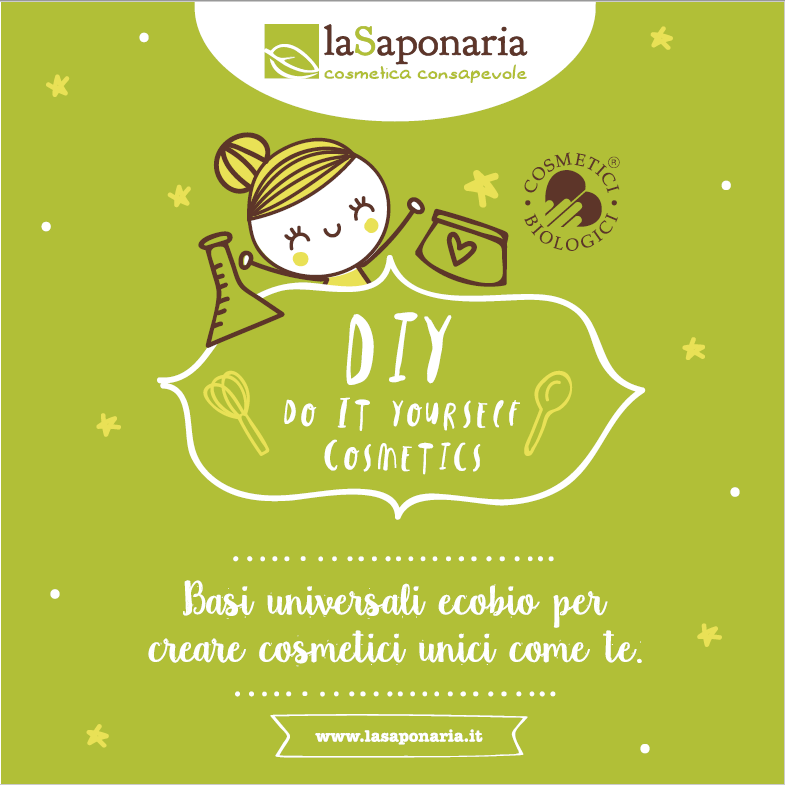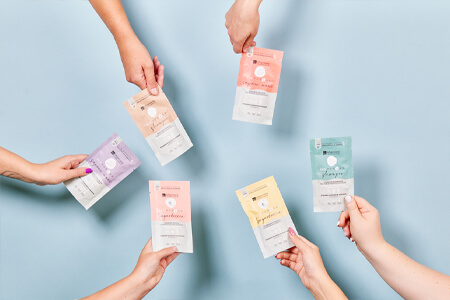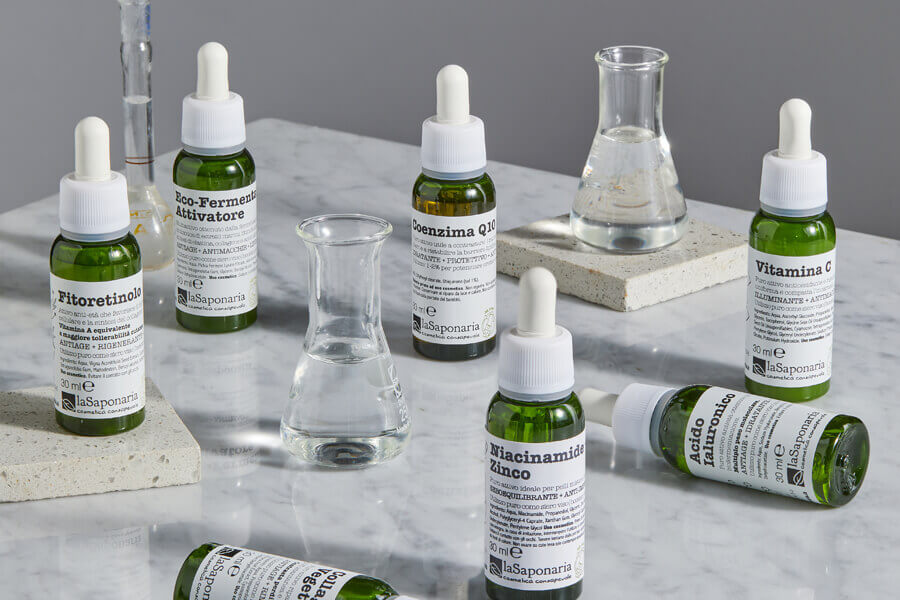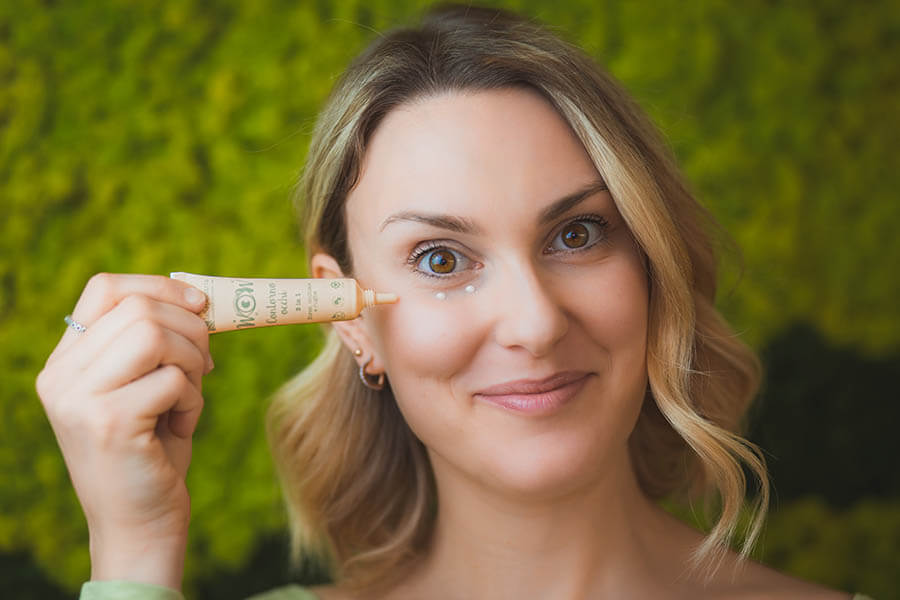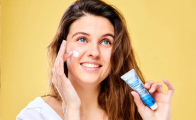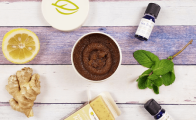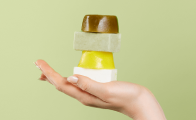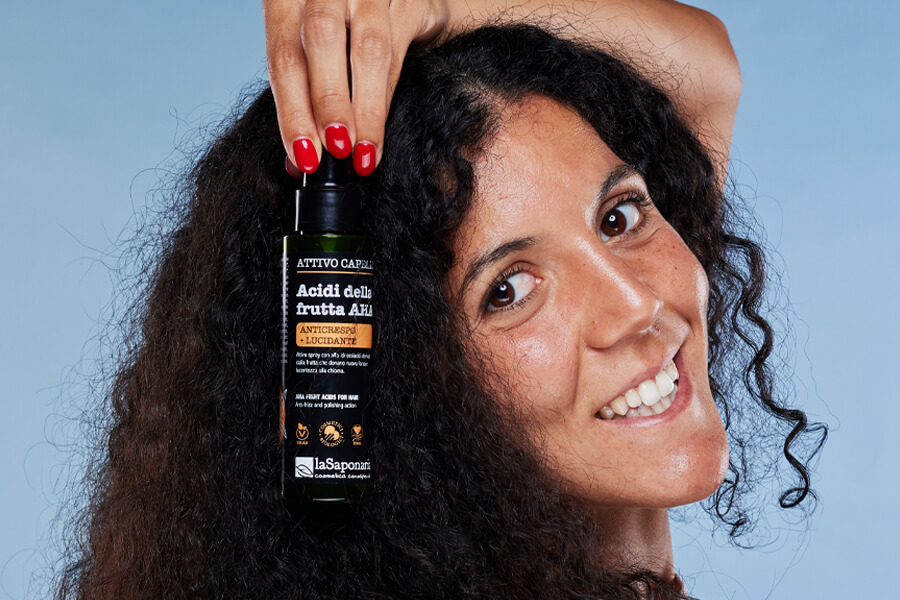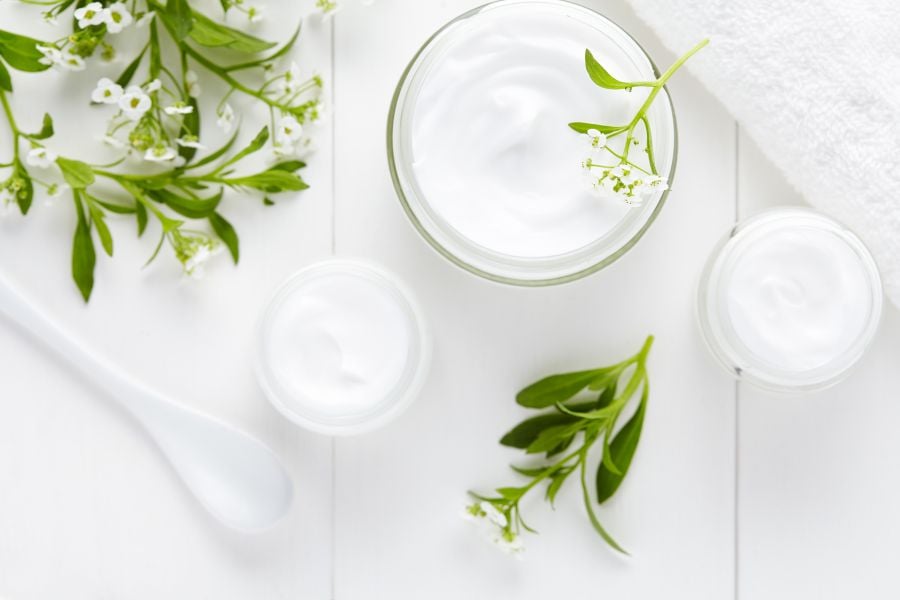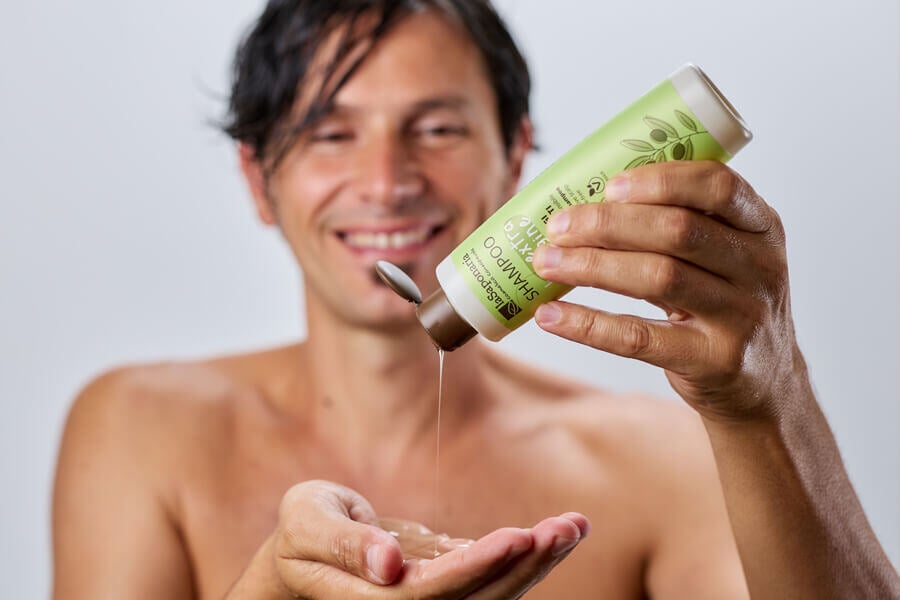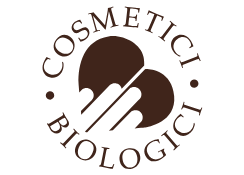The insights of La Saponaria
Acid rinse: what it is and how to do it to have glowing and tidy hair
Looking for shiny, soft and silky hair? Structuring a hair routine with natural products will help us keep our hair healthy and beautiful and doing an acid rinse at the end of each wash is a great way to make it silky and more manageable. Let's see what it is, how it is done and why it can always be useful.
Who wouldn't want soft and shiny hair? Anyone struggling with frizz or dull, lifeless hair is constantly searching for something that can tame their locks. Let's see together how and why an acid rinse can be a first and effective solution. Here are the points we will cover in our article:
- Acid rinse: what does it mean?
- The structure of the hair
- How to do an acid rinse for your hair
- Acid rinse with vinegar: pros and cons
- Acid rinse with lemon
- Acid rinse with hydrosol
- Acid rinse with Fruits Acid AHA
- When to do an acid rinse for your hair
Acid rinse: what does it mean?
In a nutshell, doing an acid hair rinse means applying a solution of water and an acid element as the last rinse, such as vinegar, lemon, or a hydrolate of your choice.
Acid rinse is to be applied after the normal washing that we usually do with shampoo and conditioner, and it can be done every time we wash our hair. It will serve to close the cuticles well, making our hair shinier, softer, and silkier.
How does this happen? To understand this, let's see how our hair is structured.
The structure of the hair
The hair is composed of two parts:
- the root, which is the "living" part that ends in the bulb, the part we don't see
- the shaft, which is the visible and "dead" part: this is where our acid rinse acts.
Let's analyze the shaft: take a hair strand and cut it horizontally. When placed under a microscope, you can see a structure composed of three main concentric areas:
- The cuticle: the outermost part of the hair, formed by a single row of thin cells (with a thickness of 0.25 microns) arranged vertically at the root and obliquely, like scales, in the shaft. When we do the acid rinse, we target this section. The cells that make up the cuticle are called scales, and we can imagine them like the scales of a pinecone. The function of the scales is to protect the inner layers of the hair.
- The cortex: the intermediate area, which is the widest part of the hair, composed of tapered cells arranged in parallel rows. Unlike the previous layer, these cells contain pigment, namely melanin, which tends to diminish over the years through the graying process.
- The medulla: represents the core of the hair, formed by rounded cells arranged in columns and separated by air cushions. These areas protect the hair from high or low temperatures, maintaining balanced internal hydration.
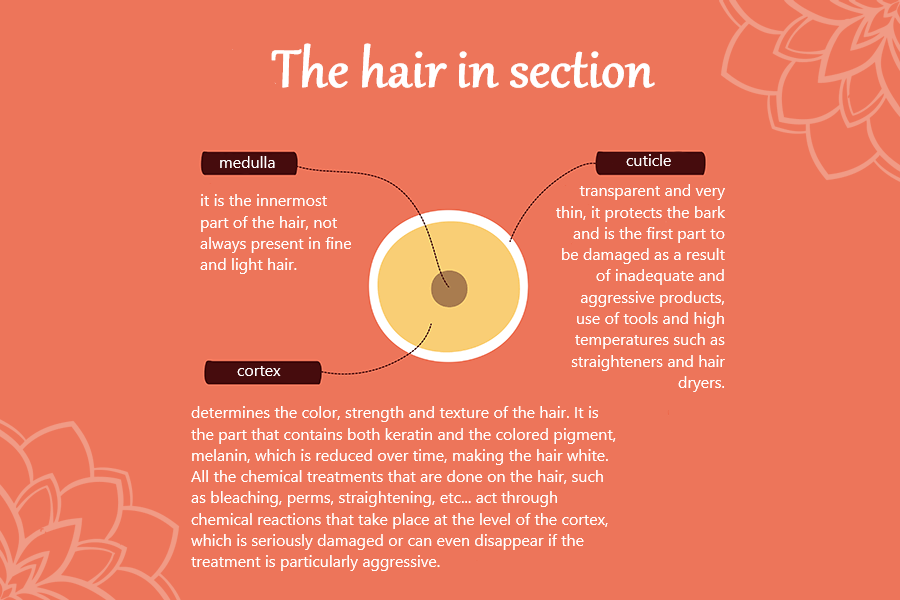
The cuticle
We have therefore seen that the cuticle is the outermost part of the hair. If the scales that compose it are arranged in an orderly manner, the hair appears healthy and shiny.
Over time, however, the cuticles can be damaged, due to the aggressions of external agents. In particular, aggressive chemical treatments and high plate and hair dryer temperatures are the main causes of damage to the cuticles.
When the cuticles get damaged, they no longer appear perfectly disposed to protect the hair shaft, but lift up. This favors the accumulation of external substances such as dust and smog for example. So damaged cuticles are among the main causes of weakening of the hair in general, and the more the scales are arranged in a disorderly way, the more difficult it will be for the order to restore itself independently, if we don't change at least some of the habits that led to the birth of this situation.
In particular, the more the hair is damaged, the more it will tend to accumulate substances that compromise its health: in addition to dust, it also tends to accumulate residues of products used for cleansing and mineral salts. The result is dull, dry, frizzy and stressed hair, even after washing.
The most sensitive area? The tips of the hair, which have been protecting the hair for the longest time and which are made up of more delicate scales, which tend to break more easily. That's why the ends of the hair are always the most damaged areas.
The acid rinse serves to tidy up the hair cuticles, to close the scales that make them up well:
for this we immediately get shinier hair!
How does it do it? The acid rinse restores the pH of the hair: in this way the structure of the cuticles is restored and hair is lighter and brighter.
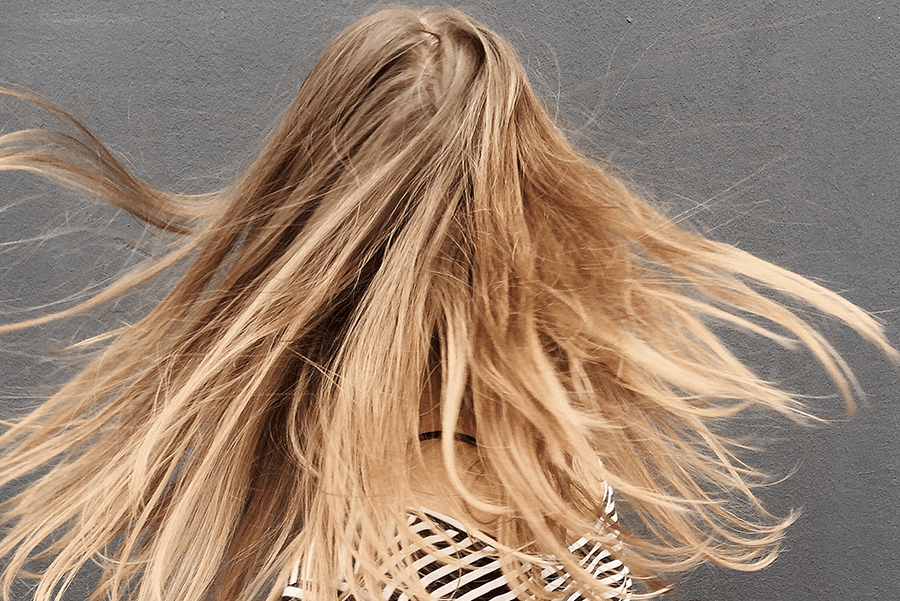
How to do an acid rinse for your hair
As we have seen, acid hair rinse is very simple: just pass a solution of water and an acid substance on the hair. But how to do it in practice? We can use specially formulated specific products, but the results will not be very different from those that can be obtained with home methods or tonics that we can also use for other uses. This is why La Saponaria does not offer specific products for acid rinsing. We have always been for conscious cosmetics and for self-production.
The acid rinse can be done, for example, with vinegar and lemon, easily available at home, or even with hydrolates. Let's see together how to do it.
Acid rinse with vinegar: pros and cons
To do this, just dilute a spoonful of vinegar, preferably apple vinegar, in a liter of water. For very long hair you can also use 2 tablespoons of vinegar diluted in 2 liters of water. If you don't have apple cider vinegar, you can also use wine vinegar. Apple cider vinegar is recommended because compared to wine vinegar it has a reduced content of acetic acid.
How to do it in practice: wash your hair with normal shampoo and conditioner, rinse with plenty of water. The very last wash can also be done with cold water, which is also useful for closing the flakes. After draining your hair, pass our mixture of water and vinegar all over your hair. Then proceed to dry without further rinsing.
Beauty tip: if at this point you dry your hair with a hairdryer, it is better to keep it as far away as possible 😉
Pros of acid rinsing with vinegar: Acetic acid allows you to close the scales of the cuticles well, helps to eliminate detergent residues and any accumulations of mineral salts.
Cons of acid rinsing with vinegar: vinegar pollutes the seas! In particular, acetic acid is dangerous for the marine ecosystem: when it gets into the water of rivers and seas it creates an environment that is too acidic which puts the health of fish and other marine species at risk.
Acid rinse with lemon
To make the acid rinse with lemon instead, just add a spoonful of lemon juice in a glass of water and then apply the solution obtained on the hair, also in this case without further rinsing. In this way we will get soft and shiny hair.
As an alternative to lemon juice which might be a bit too much for some hair types, you can use citric acid, which comes as a white powder. In this case, a tip of a knife is enough to be diluted in a liter and a half of water.
How to do it: after washing your hair with shampoo and conditioner, apply our solution of water and lemon or water and citric acid as the last step without further rinsing.
Acid rinse with hydrosol
To perform an acid rinse with hydrosol, simply spray the hydrosol directly onto the hair, without rinsing it out. After shampooing, the hair is washed, drained, and towel-dried. Before proceeding with drying, the hydrosol is sprayed onto the hair.
- If you have oily hair, you can choose sage, thyme, or rosemary hydrosol.
- If you have dry hair, you can opt for rose or geranium hydrosol.
- If you have light or delicate hair, you can use chamomile or orange blossom hydrosol.
This way, we will help the hair cuticles to close properly, and the hair will be shiny, soft, and silky.
The trend of Rosemary Hydrosol
Do you want long, strong hair that grows faster? The trend of #rosemaryoil and #rosemarywater is taking over TikTok. It involves boiling rosemary at home and regularly applying the resulting water to the hair. The reason? It is believed to promote faster hair growth. Hair masks based on rosemary essential oil are also gaining popularity. Looking at social media, it seems like rosemary can speed up hair growth. However, there is currently no scientific evidence to support these claims, although studies are underway. Nevertheless, the trend is already set! As we have seen, doing a final acid rinse with hydrolate is an excellent way to seal the hair cuticles and make them silkier and shinier. If you're unsure which hydrolate to choose, you can opt for rosemary hydrolate. Who knows, it might actually help hair grow faster ;)
Acid rinse with Fruits Acid AHA
Fruits Acid AHA is a Hair Active spray treatment that fights frizzy hair and that is perfect to be used as acid rinse. It contains AHA with anti-limescale and anti-salt effects, along with a slightly acidic pH that seals the hair cuticles. Fruits Acid AHA makes the hair silky and disciplined, and it's scented with orange blossoms and enriched with nettle and plant proteins for a strengthening effect.
From a functional point of view, AHA contain natural polysaccharides that moisturize the hair, along with antioxidant molecules that protect it from oxidative damages, like sun and pollution. When combined with an acid pH, AHA makes your hair glow, while minimizing the frizzy effect, protecting the dyeing, thus making it last longer.
AHA also have anti-limescale and anit-salt effects, which are essential to achieve glowing and silky hair. Calcium and limescale deposits can fade the color, while sea salt leads to dehydration of the shaft, making it dry and fragile. Effectively removing limescale and salt is a crucial step in maintaining healthy and beautiful hair, especially during and after the summer.
When to do an acid rinse for your hair
We have seen that rinsing must be done immediately before drying, without further rinsing. The acid rinse is very loved by those with frizzy and dull hair because it makes them softer and shinier. But when is it necessary to do it?
If we use a solid shampoo with a basic PH, it is necessary to carry out an acid rinse to restore the correct pH of the hair. In all other cases it is only recommended to make the hair acquire greater shine.
To learn more about solid shampoos and their differences, you can read the in-depth analysis at this link.
If you are not sure about your kind of hair, take the test below!

Written by Simona
She is La Saponaria’s digital writer: always juggling a newsletter to send and a blog article to publish, she lovingly takes care of our social media channels and our e-commerce.



